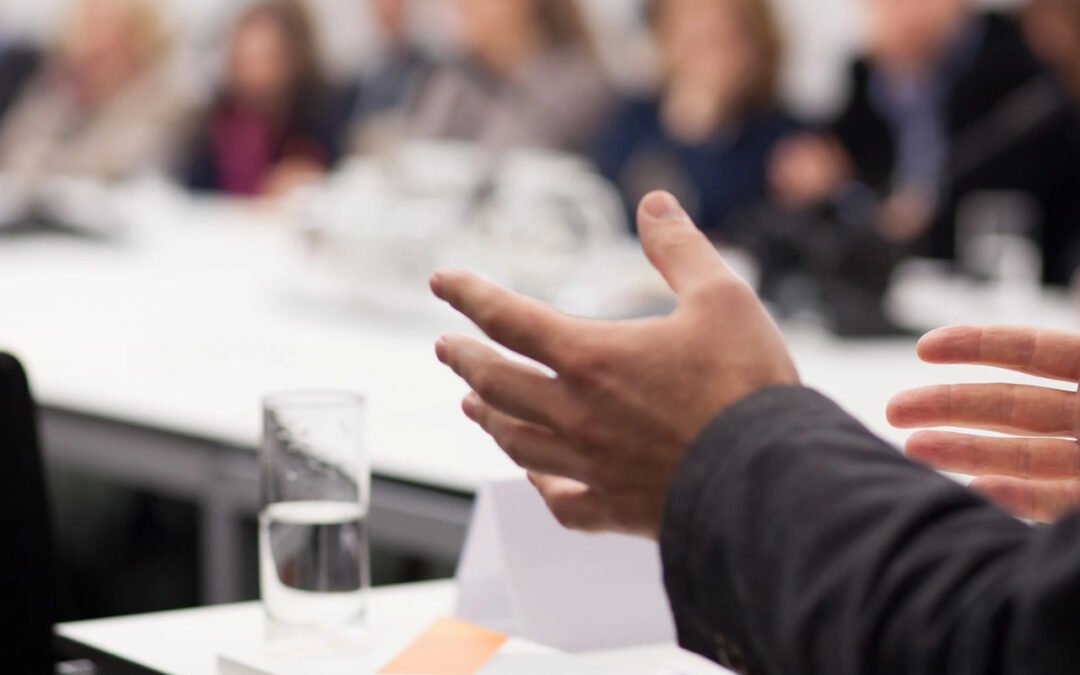
Aug 29, 2019 | All Posts
Reading Time: < 1 minute
The role of a mediator is often misunderstood by counsel and the parties. This can result in fuzzy or muddled expectations, and ultimately a failed process. Over time this lack of clarity can lead to counsel skepticism and resistance to mediation proposals. (See Why Mediation?)
It follows that something this important to the immediate well-being of the parties deserves to be properly designed. Success has the right parties armed with the right information committed to participate in a dialogue about solutions rather than a debate about the past and who is right or wrong.
Design with, not For
Experienced Mediators have learned to engage early with the parties and their counsel.
Mediation works best when all the parties considering mediation understand the process in which they are being invited to participate. The mediator and counsel can collaborate to determine the right balance between facilitation and evaluation. The parties can have meaningful input into their own role and that of their counsel. They can plan what information will really be required and how it will be shared. They can be encouraged to take more ownership of their own unique process.
The more attention I devote to the “Design with Not For” model in my mediations, the more I experience empowered and effective participation by all those involved.
For more information about these Steps or assistance with difficult negotiations contact:
[email protected]
403-801-0234

Feb 4, 2019 | All Posts
Reading Time: 2 minutes
Back in June of 2002, G8 meetings set to commence in Calgary were jeopardized when security arrangements ran up against lobbying taxi drivers, outraged over proposed changes to taxi licencing. The drivers picketed on the City Hall steps, right where the army intended to install security barriers. I was retained by the city to intervene.
Lesson 1) Parties must buy into and participate in a process they themselves helped design.
I chose a “design with not for” (See article here) approach and met separately with the taxi leadership, company owners and the city. This insured the parties felt that they had agency over resolving the conflict, rather than a decision being imposed on them.
Lesson 2) The parties must empower the facilitator to intervene.
Angry shouting and name calling dominated early negotiations. We felt empowered to intervene creatively by providing nerf balls and allowing the parties a few minutes throwing them at each other. This resulted in considerable hilarity. More importantly, it relieved tension, reminded all parties of their shared humanity and refocused on shared dialogue about options for a solution.
Lesson 3) Shift the conversation from the past to the future.
My aim was to remove the picket by bringing the appropriate parties to the table and establishing a dialogue about the future away from the spotlight of the press. This was only accomplished when the parties let go of past grievances and stepped back from the drama of the moment to focus on what they wanted to accomplish moving forward.
At the onset it appeared this local conflict could go on to have global repercussions, demonstrating the importance of reaching a quick and lasting solution. If handled properly, even the most heated exchanges can turn into productive conversations.
For more information about these steps or for other assistance with conflict management please contact us at:
[email protected]
403-801-0234

Oct 12, 2018 | All Posts
Reading Time: 5 minutes
“Breath on a mirror. If it fogs over, you have conflict.”
This phrase signifies an undeniable fact of life: that conflict is inevitable.
As with any challenge, it is useful to consider the nature of conflict in order to deal with it effectively. All conflict exists in our stories of the past about what happened, what we made it mean and the emotional attachment we have to those stories. Conflict exists today only because we bring our stories of right and wrong, and of fault and blame, with us into the present moment.
When caught in the middle of a conflict, we can often become entrenched in the view that we are right and they are wrong, and that this would be evident to anyone if they’d only listen to our story.
These beliefs are closely tied to our identity and our values. When we feel that those are threatened, we enroll allies to validate our position and weaken our opponents. We become invested in our stories as the best and often the only way to get our interests and needs met. When the allure of being right outweighs the willingness to reach a resolution, a stalemate occurs and we become stuck in story.
I call this the “Trap of Conflict”. It’s everywhere. We become so invested in our perspective that we don’t consider it to be ‘a story’, but the absolute truth, so much so that we would fully expect to pass a lie detector test if questioned. This is what it means to be “caught in story”, where we lose the ability to distinguish between what happened – the facts — and what we made them mean – our story.
Communications breakdown and become accusatory. Long standing relationships become toxic. Hopelessness looms and “war” feels inevitable. Even those who can afford the war, in whatever form it takes, are ultimately hindered by this process. While victory may seem certain, the timing of it may not—a lawyer recently told me that a one-week trial in the Court of Queens Bench is now booking well into 2020.
Escape from this trap is simple, but even simple tasks can be difficult to complete.
The 12th century Sufi mystic, Jalal al-din Muhammad Rumi, provided some wisdom in how to break free by changing our perspective and how we approach conflict altogether. He wrote: “Out beyond ideas of right doing and wrong doing there is a field. I’ll meet you there.”
This might seem like a heady concept, but it’s as simple as Wayne Dyer said: “When we change how we see things, the things we see change.” When we step back from our story and separate what happened from what we made it mean, we open up a whole different dialogue. A new range of possible options for resolution that meets the interests and needs of all the parties becomes our focus.
But why Mediate?
Simply stated, mediation is the structure and process that creates Rumi’s field.
I often get asked by lawyers and their clients, “Why should we mediate when negotiations have stalled and we already know what the other side is going to say”.
This trap of conflict, sees each party shift their focus from a mutual resolution to a cut and dry victory for one side, even if it takes all the tools in a litigator’s tool box and outrageous sums of money to do so.
It’s a runaway train with few ways off short of the court house steps.
Mediation then, is a much-needed pit stop. It is the siding along the tracks and gives all those involved a chance to pause and re-focus on options for solution.
Mediation shifts the conversation from a debate about who is right or wrong and the burden of proof to a dialogue about sharing our stories for what is really the most important and what we can do about it together in the future.
It can accommodate creative solutions that are outside the litigation box and often not available to Judges, it allows the clients themselves to retain the final say over their outcome, and when it’s properly designed, engages the parties in their own unique collaboration.
Let me give you an example. I was recently asked to mediate a dispute between a sour gas processing plant and a contiguous multi-generational farming operation. It involved contaminants from the plant flowing into the farm water wells that seriously impacted the farm’s operations. When this occurred, the family had been focused on the transfer of their very successful farm to the third generation. Prior negotiations had dealt extensively with ‘fault’ and ‘blame’ focused on financial compensation and the potential purchase of the farm including the grandparent’s grave sites. It had left very frustrated parties stuck in their stories of the past and at a complete impasse about how to remedy the situation.
The initial mediation design conversations established a process and a commitment by the parties and their counsel to explore creative solutions and test those solutions against negotiated criteria. Conversations shifted to real options for the future that would address both sides’ interests and concerns. This is where things got interesting.
During private caucus meetings the dialogue disclosed divergent interests by the younger family members that challenged the assumptions about the farm’s future. This in turn led to an exploration of options that otherwise would never have appeared as possibilities. I worked with both sides to facilitate a conversation that produced a new level of understanding. This resulted in a completely unexpected and unique solution for the family. It was made possible because the parties and their advisors took ownership of their own process and stayed committed to a creative dialogue.
In post mediation debriefs, the consensus of all parties involved was that the process had empowered them to co-create a solution that significantly exceeded their expectations.
It has been my experience over the last 30 years that most lawyers want quick and effective results for their clients, so they often support the notion of mediation. There are however some valid questions, albeit addressable, that get in the way of this support.
Hesitations toward mediation often see parties ask: “But is it the right time for mediation?”, “Don’t we need a judge present?” and “What kind of information will I have to reveal?”. It is also quite common to hear the sentiment “We already know what the other side is going to say,” in some form or another.
I approach every mediation request as an opportunity to engage the parties and their lawyers in the custom design of their unique mediation process. All these questions should be addressed collaboratively in a pre-mediation design process, as one size does not fit all.
In a very real sense, the mediator and the lawyers are each other’s best allies in reaching Rumi’s field.
In my next newsletter I will discuss how the parties and their advisors can design together their own unique mediation process.
For more information about these steps or for other assistance with conflict management please contact us at:
[email protected]
403-801-0234




